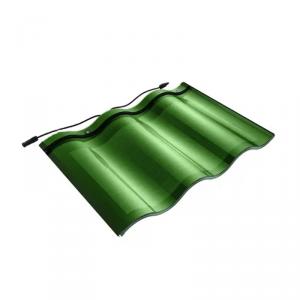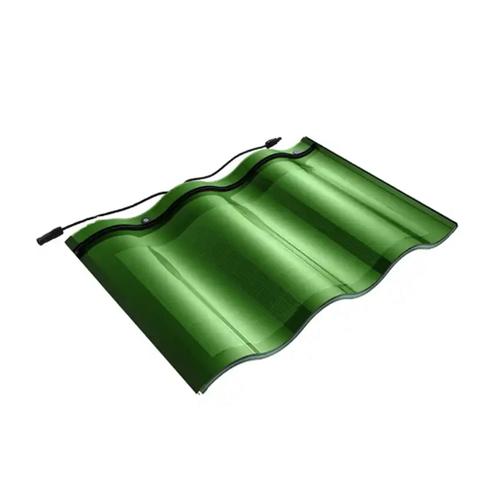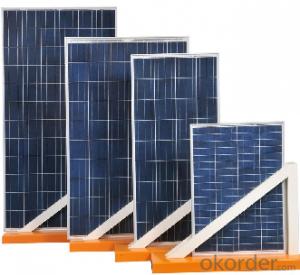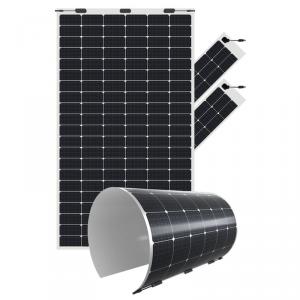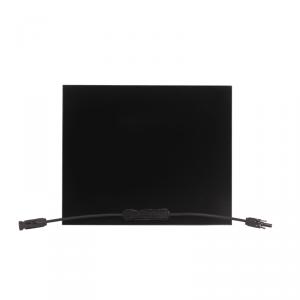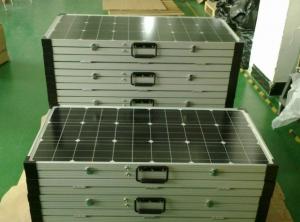XSDCM-60-T High Efficiency Curved Tile Power Generation Solar Tiles for Construction
- Loading Port:
- SHANGHAI
- Payment Terms:
- TT OR LC
- Min Order Qty:
- 10 set
- Supply Capability:
- 1000 set/month
OKorder Service Pledge
OKorder Financial Service
You Might Also Like
Specification
These power generation solar tiles can not only serve as a protective covering for the roof but also function as solar panels, generating electricity from sunlight. They convert solar energy into usable electricity, reducing or eliminating the need for electricity from the grid. PV tiles can significantly lower energy bills and contribute to a more sustainable energy portfolio for homes and businesses.
These tiles feature advanced photovoltaic technology that maximizes energy conversion rates, generating more electricity per square meter compared to standard PV tiles.
Energy Efficiency:
By harnessing the abundant solar energy, these tiles significantly reduce your reliance on grid-based electricity. They convert sunlight directly into DC electricity, which can then be used to power your household appliances or stored in batteries for later use. This not only leads to cost savings on energy bills but also contributes to a greener environment.
Flexibility & Adaptability:
The most prominent feature of curved PV roof tiles is their ability to conform to curved rooflines, allowing for a seamless blend with unique architectural styles. This eliminates the need for unsightly gaps or compromises in design.
Versatility:
Suitable for a wide range of roofing applications, from residential homes to commercial buildings.
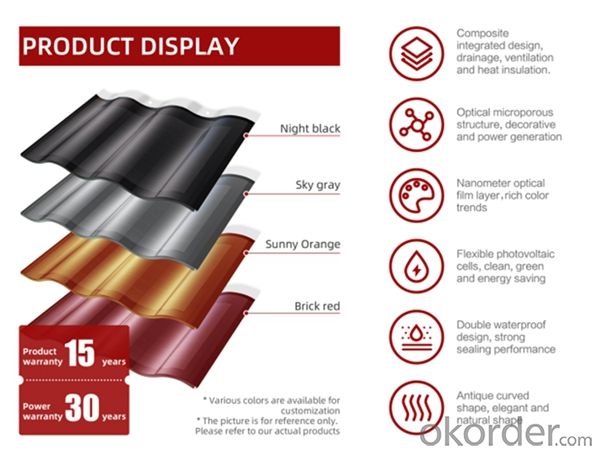
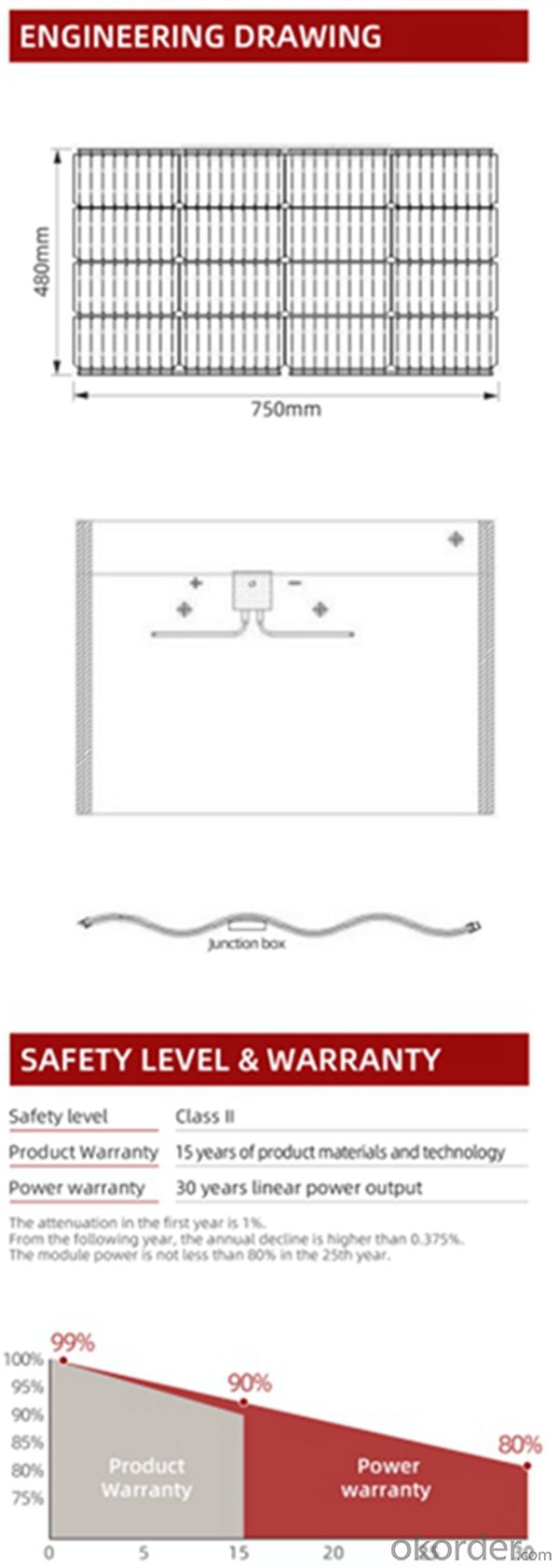
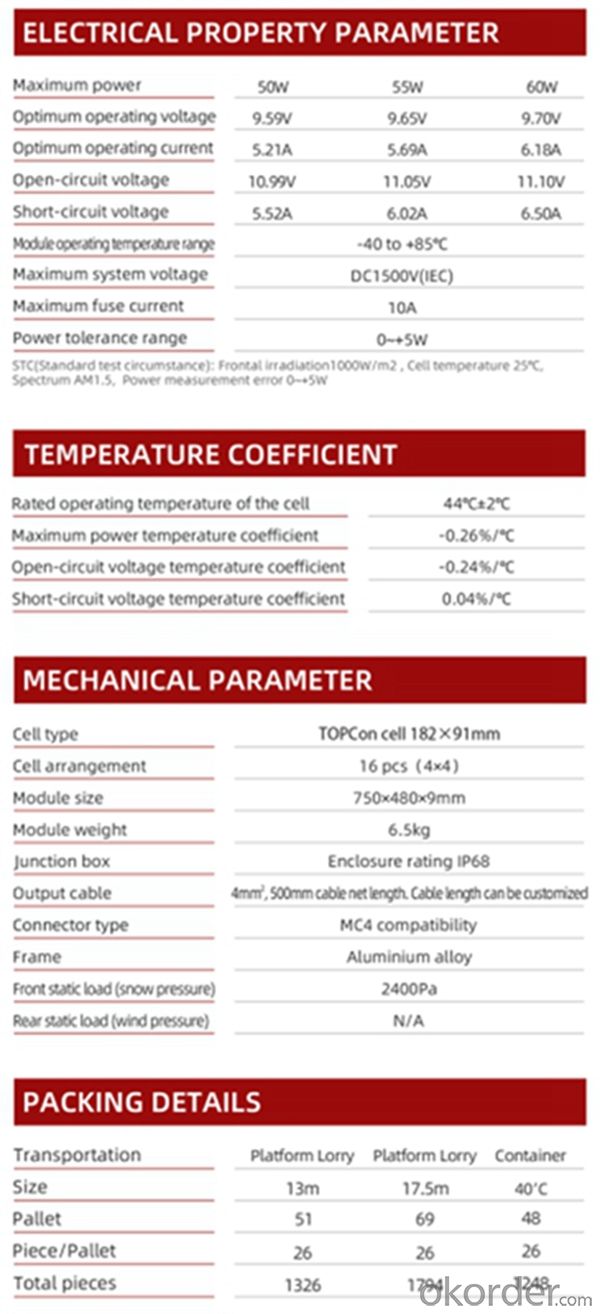
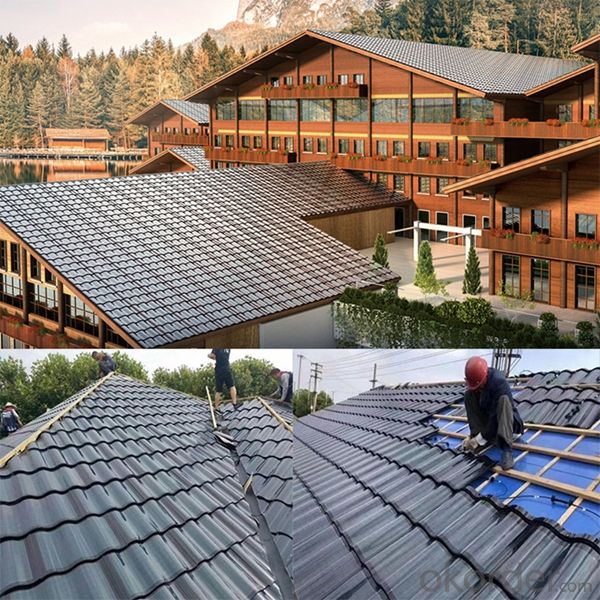
- Q: Are there any disadvantages to using solar panels?
- Yes, there are a few disadvantages to using solar panels. Firstly, the initial cost of installing solar panels can be quite high, although this cost has been decreasing in recent years. Additionally, the efficiency of solar panels can be affected by factors such as weather conditions and shading. Furthermore, solar panels require a significant amount of space for installation, which may not be feasible for everyone, especially in urban areas. Finally, solar panels are dependent on sunlight availability, making them less effective during cloudy or nighttime conditions.
- Q: Rooftop solar panel (not sure if rubber or plastic?) has leak arising from thin vertical crack in panel about long. Any ideas for repair?Thanks.
- Depending on the material and operating temperature of the panel, it MAY be possible to fix it very simply and easily by applying Hot Glue Gun adhesive over the cracked area. The high temperature glue gun adhesive melts at approximately 60 degrees Farenheit, and if the collector temperature does not quite reach, or exceed that operating temperature, then that repair method should work. Another possibility is an aerosol spray can product called LeakEnder. This is usually available at your local hardware store, or the major home improvement centers [like Lowe's, Sutherland's, Home Depot, McCoy's, etc.]. After preparing the area to be patched by cleaning, you just spray the LeakEnder patching material on the crack and an eighth of an inch or so around. IF the operating pressure or the collector is very low, it MAY even be possible to patch the leak with nothing more than a narrow strip of DUCT TAPE!!!!! Another possibility, but unless carefully accomplished is to weld the crack with a Soldering Gun and some scrap plastic from packaging material. The problem with this fix is that you must be very experienced in application of heat from the Soldering Gun, OR you will melt a larger hole in the collector tube than the crack was. Regardless of patching method, it is CRITICAL that the cracked area to be patched MUST be CLEAN and DRY BEFORE applying any patching material. Good luck!
- Q: Can solar panels be installed on farmlands or agricultural fields?
- Yes, solar panels can be installed on farmlands or agricultural fields. In fact, many farmers and landowners are increasingly using their land for solar energy production as it can provide additional income and sustainable farming practices. Solar panels can be mounted on ground-mounted systems or integrated into structures like barns or sheds without interfering with farming operations. Additionally, solar installations can offer benefits such as reduced energy costs and promoting environmental sustainability in the agriculture sector.
- Q: Can solar panels be used in cloudy regions?
- Yes, solar panels can still be used in cloudy regions. While solar panels do work best under direct sunlight, they can still generate electricity from diffused or scattered sunlight present in cloudy conditions. However, the overall energy output may be lower compared to sunny regions.
- Q: i need to make a mini-solar car which shouldn't cost much. it's for my science project. for now, i just found out how to make a solar panel using copper oxide, but it does not generate enough power to power up the engine of the toy car [ the small engine they used in the toys, like from TAMIA]
- try adding more solar panels to your car, what if you take the solar panels out of 2 or 3 calulators , add them, then use some tiny mirrors to help draw more light into the panels,.--------------------------------... solar cell (or a photovoltaic cell) is a device that converts photons from the sun (solar light) into electricity. In general, a solar cell that includes the capacity to capture both solar and nonsolar sources of light (such as photons from incandescent bulbs) is termed a photovoltaic cell. Fundamentally, the device needs to fulfill only two functions: photogeneration of charge carriers (electrons and holes) in a light-absorbing material, and separation of the charge carriers to a conductive contact that will transmit the electricity. This conversion is called the photovoltaic effect, and the field of research related to solar cells is known as photovoltaics. Solar cells have many applications. Historically solar cells have been used in situations where electrical power from the grid is unavailable, such as in remote area power systems, Earth orbiting satellites or space probes , consumer systems, e.g. handheld calculators or wrist watches, remote radiotelephones and water pumping applications. Recently solar cells are particularly used in assemblies of solar modules (photovoltaic arrays) connected to the electricity grid through an inverter, often in combination with a net metering arrangement. Solar cells are regarded as one of the key technologies towards a sustainable energy supply.
- Q: how much power is generated with solar panels? also please give me links for that information.and how much would the costs be for this alternative energy source?
- If you put 'solar world statistics' into a search engine, you will discover that there are many statistics that are being heavily contested. Picking up the truth from among hype is the task. Solar panels typically have a rated maximum output of about 0 watts per sq metre. But actual delivery to grids of kWh would point to a number closer to 4 watts / sq M. on a 24 hour basis. Grid management is thus cautious about yield claims when history points to only /8 of rated maximum output. There may be some inappropriate expectations, when a solar roof is first powering the building, and only selling excess to the grid.
- Q: Are solar Panels worth it, Do they really quot;save moneyon electricity?
- “Where you have good (sunlight) and access to financing and a combination of federal and state incentives, you have a number of markets around the country that are very vibrant, and it’s very cost-effective with financial paybacks in the order of five and 0 years,” said Robert Margolis, a senior energy analyst at National Renewable Energy Laboratory (NREL).
- Q: Properties of solar panel?I know this is too general,but i am to write a report on the materials used to make solar panels,and i am to include the physical, mechanical ,and chemical properties of the materials.It's just too general,such that i am lost.There are so many types of solar panels.So i hope some experts on this subject can give me a general guide lines ,maybe the tensile strength ?as much as you can please.
- The main property of solar panel is to convert solar energy into electrical energy. Solar panel has been made to convert solar energy i.e. natural energy into electrical energy. A combination of solar cells together forms a solar panel. Solar panel converts solar energy into electrical energy. Solar panel depends on natural and free resource rather than paid resources. Easy to plant. Low cost. Long lasting. Pollution free.
- Q: I'm thinking of doing solar panel but i don't know how much they are i need help! please!
- no one has answered because you asked a question that cannot be answered. It is exactly the same question as how much is a car?. Do you want a passive solar heating panel, a solar electric panel, .5 Volts, ,000,000 BTUs, do you want just the panel or the panel installed and functioning, or what? the answer is between $5 and $5,000,000.
- Q: Ok, so my homework was to research and write about how solar panels and solar furnaces work and about their construction. We didn't even take one lesson on it in class and we are not allowed to copy and paste much and have to keep it simple wtf? Its soo annoying as we have hardly took it in class. Please can someone help.
- Well solar panels conduct electricity from the suns waves and turns it into dc current then it is either put into a grid tie inverter to change it to AC and it makes you meter go backwards instead of forwards. or if its not a grid tie inverter it is just put into batteries as dc then changed into AC from the inverter and then used for household appliances. nothing really does run on DC that is why it has to be changed. and for solar furnaces if you mean a water heater that works by a substance here in Pa its antifreeze is heated up by the sun in the panel it is in a continous loop and that is what gets heated up the water then flows over tow of the tube that contains what ever substance such as antifreeze and heats the water.were the water and the tube that changes the water from cold to hot is called the heat exchanger. the substance is actually get heated first then the water. solar heating for water accounts for 29% of water heating in the us. Now if you mean solar furnace as in passive solar thats completely different because here in Pa if we want it our houses have to face to south to get the suns rays. (alot more windows) and there is a cement slab placed only on the south side of the house and it has insulation covering it. There is a certain type of glass that is used for this that will allow the suns rays to come in and let the heat in for the summer and also for the winter. the main place for that would mostly be the first floor of the house due to the height of the windows and the angle of the sun(pa in the summer is 73 degrees and in the winter its 27 degrees) thats when the second floor would be ok to heat the rooms. Hopefully i helped and i explained it in a way that you can understand.
Send your message to us
XSDCM-60-T High Efficiency Curved Tile Power Generation Solar Tiles for Construction
- Loading Port:
- SHANGHAI
- Payment Terms:
- TT OR LC
- Min Order Qty:
- 10 set
- Supply Capability:
- 1000 set/month
OKorder Service Pledge
OKorder Financial Service
Similar products
Hot products
Hot Searches
